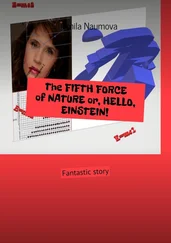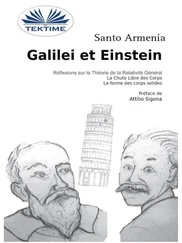“Ah yes, you should remind me of what the acronyms stand for,” said Roger. “To be properly admitted to the high priest hood, one must first memorize all of the holy acronyms.
George grinned. “SDC stands for Solenoidal Detector Collaboration. It’s a big barrelshaped superconducting solenoid coil with elaborate wire chambers on the inside and layers of calorimeters and muon detectors on the outside. It collects data mainly for the hadronic sector, the heavy charged particles from the collision. LEM stands for Lepton and Electro-Magnetic Processes, the processes it’s designed to detect.
“I should add, for your cultural edification, that some of our rivals have had the temerity to suggest that LEM stands for Jake’s Large Empire of Minions or the Loony Excursion Module. It’s a large open-geometry superconducting toroid for detecting leptons and photons.
“LEM is working fine at the moment, but some of the electronic components are already failing. We’re worried. Some of the radiation-hardened detector circuits are turning out to be not as radiation-hard as we’d expected, and we badly need to replace them with better ones. I’m here at CERN to compare notes on radiation damage problems with people in the LHC detector groups. One of their experts, Wolfgang Spiegelmann, is going to spend next month working with us at Waxahachie.”
“Anything, ah… interesting in the data you’ve collected so far?” Roger asked.
“Well, we haven’t yet discovered any Higgs bosons with LEM, if that’s what you mean. Neither has the SDC, but we’re all looking hard. The students claim that Jake Wang has already written the paper announcing the discovery of the Higgs. He only has to fill in a few numbers and paste in some graphs when we actually find it. He expects his Nobel prize any month now.” He smiled and combed his beard again.
Roger looked across at George. “Of course!” he said. “I’d overlooked that minor detail. You must work with Jake.” He smiled sympathetically, realizing that he had probably hit upon yet another of Griffin’s favorite topics of conversation.
George shook his head. “I don’t think you understand, Roger. Nobody works with Jake. I work for Jake, just as everyone else in the LEM collaboration does. All of Jake’s detector projects have started with the letter l, all have produced excellent physics, and all of them have left a trail of broken minds and bodies in their wake.
“The story goes that a prominent particle physicist suffered an unexpected heart attack, dropped dead, and immediately found himself standing before St. Peter at the Gates of Heaven. St. Peter carefully examined his earthly record, asked some pointed questions about several referee reports the physicist had written, and finally decided to admit him to Heaven. As he was passing through the Pearly Gates, the man noticed to his right an enormous particle detector that looked like LEM, and standing before it was a solemn oriental man in a tailored gray business suit, checking papers on a clipboard against some details of the detector.
“ ‘Why, that’s Jake Wang over there,’ said the physicist. ‘Is he dead, too? I saw him at the SSC just last week.’
“ ‘Oh no,’ said St. Peter. ‘That’s God. Sometimes he likes to play at being Jake Wang.’”
Roger laughed. “I heard the same story at Cambridge about Disraeli, but I think it probably fits your friend Jake better. Even in England I’d heard stories about his rages and personality quirks.”
“Yes,” said George. “Unfortunately, all of those stories are true. Of course, it is possible to adjust to him. In fact, there are many time-tested ways of adjusting to Jake…” He smiled. “A nervous breakdown, alcoholism, heavy tranquilization, a quick drink of strychnine, a change of profession…” He smiled.
Roger raised an eyebrow. “That bad…?” he said.
George shrugged. “It’s the price that fate has extracted from me in exchange for my involvement in the best experiment on the best accelerator in the world. Usually I think it’s worth it.”
ALICE GLANCED UP AT THE RUNDOWN BUILDING AS SHE paid the cab driver. She frowned. Could this really be the New York headquarters of the famous Wagner Publishing Company, the publisher of all her novels? She stepped around the derelicts near the entrance, walked past a sleazy-looking guard by the doorway, and entered the building’s lobby. There was no mistake. The building directory listed WAGNER PUBLISHING COMPANY, SUITE 401.
When she pressed the call button for the elevator, feeling a bit uneasy, the guard laughed unpleasantly. “No elevator this week, lady,” he said. “The stairs are over there.” He laughed again.
She felt growing concern as she walked to the stairway, remembering that her financial and literary future depended on this publisher. Weren’t the big New York publishing houses supposed to have fancy offices on Fifth Avenue?
Alice was breathing hard when she reached the fourth-floor landing and pushed through the fire door. She looked around, feeling somewhat reassured. Apparently Wagner occupied the entire fourth floor of the building. The elevator lobby was nicely decorated and furnished. It was adorned with a large gilded Wagner Books logo and a long glass-covered display exhibiting the covers of some of their recent publications. She noted that although her most recent novel, E as in Earthworms, had just come out and was selling very well, it was not among the paperback books in the display case. Prominently featured was George Bush’s recent Saddam, Boris, and I, along with Fabulous Washington Sex Scandals, Madonna’s Secret for Thinner Thighs, The Financial Secrets of Football AllStars, and How to Psychoanalyze Your Cat. Nonbooks, she thought. I hope at least that stuff pays the bills here.
Alice smoothed a wrinkle at the sleeve of her loose white jacket and brushed a fleck of lint from the side of her elegant light blue dress as she approached the reception desk. “Miss,” she said, “I have an appointment with Janet Renfrew. Please tell her that Alice Lancaster is here.” Alice liked the sound of Lancaster, which was her pen name. It looked better on a book than Lang, the name she was born with, or Brown, the name of her late husband.
The receptionist picked up the handset of her telephone, dialed a number, chewed her gum for a while, and then replaced it in its cradle. “I can’t reach Janet because the phone system is acting up again. Guess you can go on back to her office. It’s in the back of Room 447. Go straight back to the first partition and turn right, then left to the wall and another two rights and a left. Ya can’t miss it.”
Alice wondered briefly if this was a joke but decided that the receptionist didn’t seem sufficiently amused. She ventured through the door and was immediately confronted by a barricade of cardboard boxes filled with books. She took a long detour around the obstacle, took several turns along the lines the receptionist had suggested, and was soon completely lost in a warren of narrow passages, small offices, partitions, piles of printed matter, and desks. No room numbers were visible anywhere.
A young man wearing faded jeans, a T-shirt advertising a defunct 1960s acid rock group, worn running shoes, and a new-looking camel-hair sport coat approached her. “Can I help you?” he asked.
She asked him how to find Janet Renfrew, and he guided her along several more hallways to a room filled with people, all talking rather aggressively into telephones. “That’s our collections group,” he said.
“Book collections?” Alice asked.
“No,” he replied. “Bill collections. Go to the far end of the room. Janet’s in the little glassed-in nook back there by the windows.” He smiled and waved, then turned away.
Читать дальше











